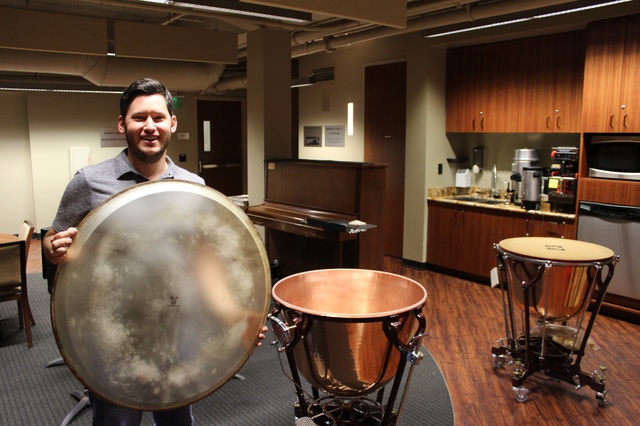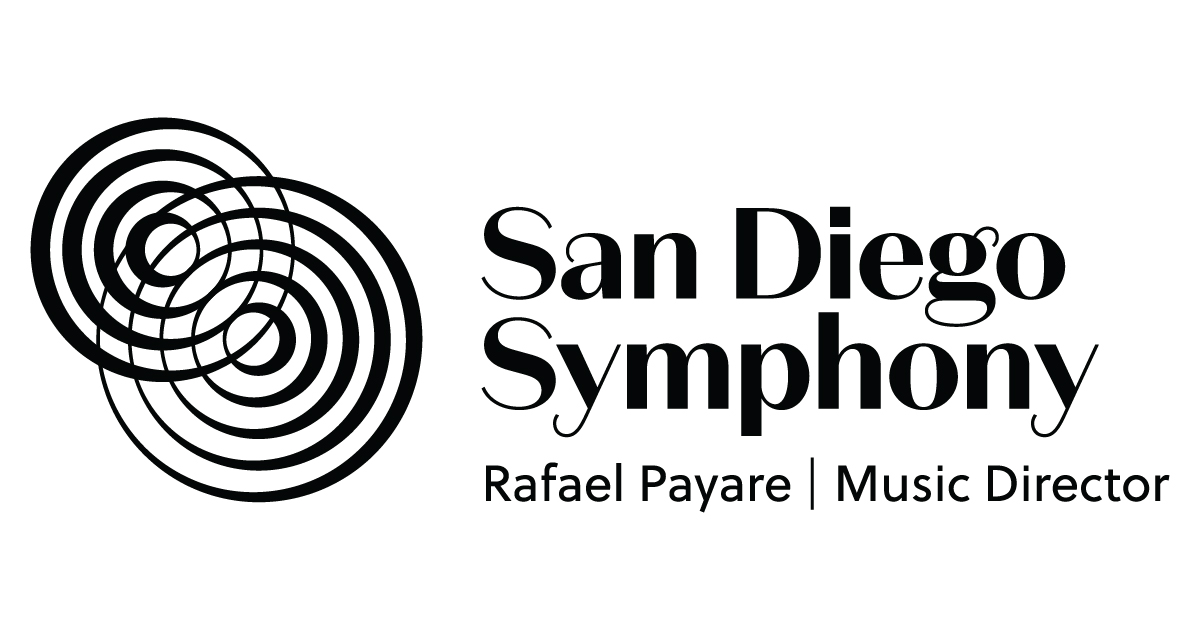In the Musicians' Lounge: Ryan DiLisi's return

We’re celebrating percussion all month long here with the Symphony’s It’s About Time Festival and principal timpanist Ryan DiLisi is busy preparing to take center stage. We caught up with Ryan to discuss his pre-concert rituals, the future of percussive music and what makes music rock hard.
SDSO: Do you have any specific rituals you do before a concert?
RD: The only ritual I have is to uncover the timpani and put wet sponges inside of the bowls. The calf skin timpani heads need time to adjust to the stage lights shining down on them, which involves using moisture to equalize the drying effect of those lights (as well as the dry San Diego climate). Otherwise I pretty much treat the time before a show as a normal night, which is something I've trained myself to do from auditioning. The more normal I felt, the less nervous I'd be when it came time to play my audition, so I started eating what I always eat and doing what I always do.
SDSO: Can you describe your rehearsal process for a concert?
RD: For me, it begins with getting my music and going through it all to put in my basic markings (like when to change the pitch of the drums). Then I'll listen to the music and make additional markings that help me create phrases and go beyond just playing the notes (for instance when to let a note ring or when to mute that ringing, what other instruments am I playing a particular passage with, cues to help me know what's going on; there are hundreds of different markings I end up putting in). I'll also practice the difficult passages before and during the orchestra rehearsals. In rehearsal itself, we typically play through a work or a movement, then go back and work on it from the beginning, and the conductor will begin to shape the music into how they want it to sound. Sometimes we can move through it quickly if it's a more familiar piece, and sometimes it takes a while if it's less familiar or just a difficult work. There are always passages that require some extra attention to polish, so we'll rehearse those several times until we get it right. I continue to make markings in my music about what type of mallet I'll use for each moment of the piece, correcting any mistakes I've made before or changing any musical idea that I don't like the sound of when it's put together with the orchestra. We work this way for the first four rehearsals on Wednesday and Thursday, and then on Friday's rehearsal we typically run through each piece, and afterwards the conductor will make a few remarks about anything he still feels needs attention. Once that rehearsal is done, it's show time!
SDSO: How did you get into playing percussion as opposed to other instruments? How did you start pursuing your music career?
RD: I always wanted to play the drums. For some reason, I was just drawn to them from as early as I can remember. So when I was able to choose an instrument in fourth grade, my parents let me quit the piano and start taking drum lessons. I was blessed to have amazing teachers throughout all of my schooling. My first private teacher instilled a sense of fun to music while building a wonderful technical base. And he was humble and smart enough to see when I needed to change teachers to a specialist in classical music, and helped me take advantage of an opportunity to study with the timpanist of the Philadelphia Orchestra, who remains a mentor to me. At some point, this teacher brought up to me and my parents that he felt that I had the potential to ultimately make a living as an orchestral percussionist, and should really consider going to music school for college. I was already becoming increasingly interested in music and less interested in other subjects in school, so I was thrilled, and my parents were incredibly supportive, helping me in every way that they could to make this dream happen.
SDSO: How do you describe percussive instruments to someone not familiar with them?
RD: There's something so basic, fundamental, and satisfying about percussion. I don't think I've ever seen someone pick up a giant mallet and hit a gong, or take a pair of sticks and start hitting a snare drum, and not smile! No matter what sound comes out, a sound that resembles that instrument is still heard, and I think that's what makes percussion so familiar to people. When people ask what that means in an orchestra, I'll list a few of the recognizable instruments (bass drum, cymbals, snare drum, triangle). Then I'll name a few that they would recognize the sound of but not know the name of (the whip crack-technically called a slap stick, or the castanets). Finally I'll tell them that percussionists are asked to play pretty much anything, from rattling chains to sand paper blocks to bird calls.
SDSO: What is your favorite time signature to play in?
RD: 6/8 or 12/8. I've discovered that it has the most propulsive feeling, in all music. Put on the radio and listen to a few songs, and you'll see that the songs that really make your head bop and feet tap are the ones in those meters. Everything rocks harder with a triple feeling!
SDSO: What is your opinion on where percussive composition music is going compared to where it's been in the last 50 years?
RD: The bar keeps getting raised for percussion. Techniques that used to be novel are now standard. For instance, using 4 mallets to play the marimba is common now, and the difficulty of the music being written for that has grown significantly. With so many percussionists receiving high quality training in college, the bar keeps getting raised. And so composers are reacting to that by writing more challenging music. Percussion music is now written almost like any other instrument, and it's often left to the performer to figure out how to play it.
SDSO: What kind of music do you listen to outside of your performance obligations?
RD: I love 80's hair bands, Hawaiian music, Spanish and Italian folk music, jazz standards, Christmas music (anytime of the year!), and whatever is popular on the radio at the moment. Apparently I'm pretty easy to please when it comes to listening to music.
Catch Ryan making soundwaves this month throughout our It’s About Time Festival and check back here with the Cultural Omnivore to get to know more musicians and enjoy behind-the-scenes bites at the Symphony.
This post was written by Kelly Hillock, marketing assistant for the San Diego Symphony.
Share ArticleBack to all posts
